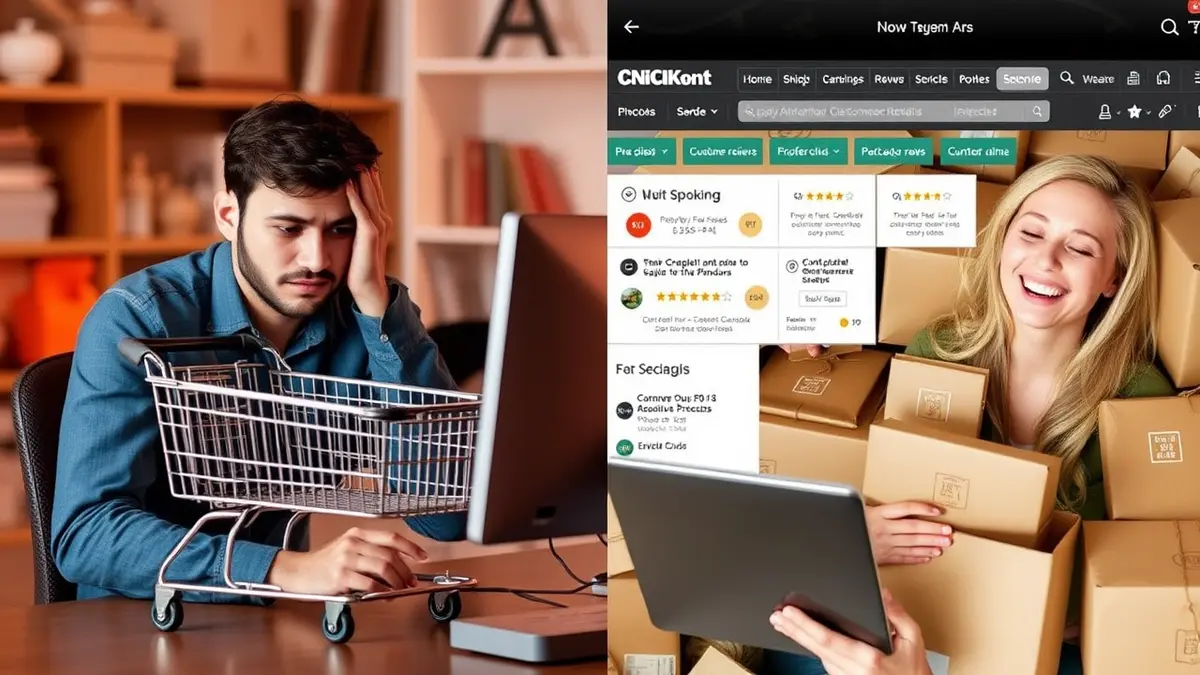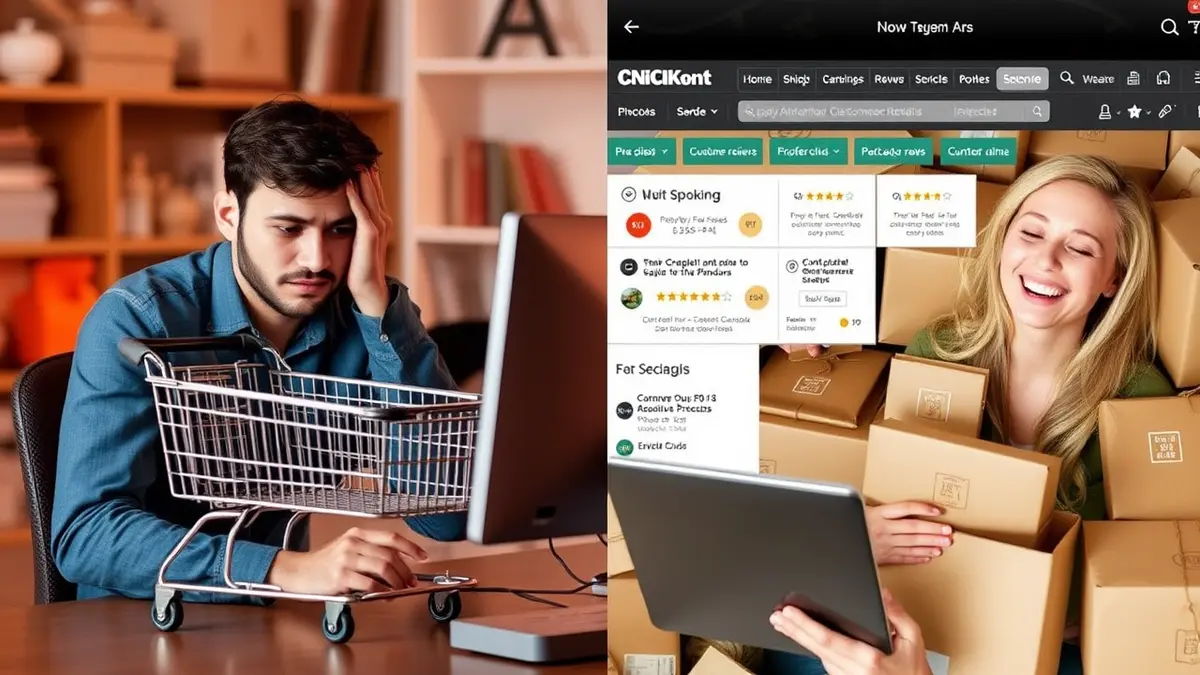Walmart and Target are titans of retail—but when it comes to snagging the best deals, who truly reigns supreme? We're diving deep into the pricing strategies, product selection, and loyalty programs of these retail giants to help you decide where to spend your hard-earned money. Get ready to uncover the secrets to smart shopping and discover which store gives you the most bang for your buck—with direct links to the best prices (of course!).
Here's what we'll be covering:
- What You’ll Learn
- The Allure of Low Prices: Walmart’s Edge
- Target's Trendy Appeal and Price Point
- Product Selection: A Tale of Two Strategies
- The Battle of the Brands: Private Label Showdown
- Loyalty Programs and Perks: Getting the Most Out of Your Shopping
- Navigating Sales and Promotions: Insider Tips
- Online Shopping Experience: Convenience at Your Fingertips?
- The Verdict: Which Store Offers the Best Deals?
What You’ll Learn
- A comparative analysis of Walmart and Target's pricing strategies.
- The strengths and weaknesses of each store's product selection.
- How to maximize savings through loyalty programs and sales.
- Insider tips for navigating the online shopping experience.
- A final verdict on which store provides the best overall value.
The Allure of Low Prices: Walmart’s Edge
Walmart, oh Walmart—the retail behemoth, the place you can buy groceries, garden gnomes, and (almost) everything in between. For many shoppers, the main draw is simple: rock-bottom prices. Walmart has built its empire on a promise of "Everyday Low Prices," a strategy that aims to undercut competitors and attract budget-conscious consumers.
But how does Walmart manage to keep prices so low? It's a combination of factors:
- Massive scale: Walmart's sheer size allows it to negotiate favorable deals with suppliers. They buy in bulk—serious bulk—which translates to lower per-unit costs.
- Efficient supply chain: Walmart has invested heavily in its supply chain, streamlining distribution and reducing transportation costs. It's a well-oiled machine designed to minimize expenses.
- Cost-cutting measures: From store design to employee wages, Walmart is constantly looking for ways to cut costs. This relentless focus on efficiency helps keep prices down.
For example, I remember when I needed a new blender last year. I checked both Walmart and Target. Walmart had a basic model for $15, while the cheapest blender at Target was $22. That extra $7 can make a big difference when you're on a tight budget. (My frugal cousin, bless her heart, would have driven to the next county over to save even two bucks, truth be told.)
However, it's not all sunshine and roses. Some critics argue that Walmart's low prices come at the expense of worker wages and environmental sustainability. It's a complex issue with no easy answers. Regardless, if your priority is finding the absolute lowest price on everyday essentials, Walmart is often the winner. Need to stock up on paper towels, cleaning supplies, or pantry staples? Walmart's got you covered (usually).
Target's Trendy Appeal and Price Point
Target, on the other hand, projects a different image. While still focused on value, Target aims for a more "upscale" shopping experience. Think brighter stores, wider aisles, and curated product selections. And, of course, let's not forget the ever-tempting dollar spot (or, these days, the five-dollar spot…inflation hits us all, eventually).
Target's pricing strategy is a bit more nuanced than Walmart's. They often match Walmart's prices on certain items, but they also emphasize promotions, sales, and their popular Target Circle loyalty program. In essence, they want you to feel like you're getting a good deal, even if the base price isn't always the lowest.
Here's what sets Target apart:
- Stylish design: Target has a knack for partnering with well-known designers to offer exclusive (and affordable) home goods, clothing, and accessories.
- Curated selection: Unlike Walmart's sprawling aisles, Target's product selection feels more carefully chosen. You're less likely to find yourself overwhelmed by endless options.
- Focus on experience: Target aims to create a pleasant shopping environment. Think clean stores, friendly staff, and a generally more enjoyable atmosphere.
For instance, last Christmas, I was looking for a unique gift for my niece. Walmart had plenty of toys, but nothing really stood out. At Target, I found a beautifully designed art kit that was both creative and affordable. It felt like a much more thoughtful purchase. I even grabbed a festive candle while I was there—marketing success!
Of course, this comes at a cost. Target's prices are generally slightly higher than Walmart's on comparable items. You're paying a premium for the ambiance, the curated selection, and the designer collaborations. But for many shoppers, the trade-off is worth it. It's a matter of priorities: are you willing to spend a bit more for a more enjoyable shopping experience?
Product Selection: A Tale of Two Strategies
The range of products available can make or break the shopping experience at any retailer. It is a crucial factor in determining where consumers choose to spend their money.
Walmart's Wide World of Wares: Walmart boasts an enormous selection of products, spanning everything from groceries and electronics to apparel and home goods. This vast assortment makes it a one-stop-shop for many consumers, offering convenience and efficiency. Need to buy milk, a new TV, and a birthday present all in one trip? Walmart has you covered. However, this breadth of selection can also be overwhelming, with endless aisles and a somewhat haphazard layout.
Target's Curated Collections: Target takes a different approach, emphasizing curated collections and exclusive partnerships. They focus on stylish home goods, trendy apparel, and innovative products, often collaborating with well-known designers and brands. This approach creates a more focused and inspiring shopping experience. While Target's overall selection may be smaller than Walmart's, it is carefully chosen to appeal to a specific aesthetic and lifestyle.
A TechCrunch piece last spring pointed out Target's strategy of "cheap chic"—offering affordable versions of high-end trends—has resonated particularly well with millennial and Gen Z shoppers. For example, Target's home decor section often features stylish pieces that mimic those found in more expensive retailers, but at a fraction of the price.
So, who wins in product selection? It depends on your needs and preferences. If you prioritize variety and convenience, Walmart is the clear choice. But if you're looking for stylish, well-designed products and a more curated shopping experience, Target is the winner.
The Battle of the Brands: Private Label Showdown
Both Walmart and Target have invested heavily in their private label brands, offering consumers affordable alternatives to name-brand products. These private label brands are a key part of their overall pricing and product strategies.
Walmart's Great Value and Equate: Walmart's private label brands, such as Great Value (food) and Equate (health and beauty), focus on providing basic, affordable options for everyday essentials. These brands are often priced significantly lower than their name-brand counterparts, making them a popular choice for budget-conscious shoppers. Honestly, the packaging isn't always the most inspiring, but the savings can be substantial.
Target's Up&Up and Cat & Jack: Target's private label brands, such as Up&Up (household essentials) and Cat & Jack (children's clothing), aim for a higher level of quality and design. While still affordable, these brands often feature stylish packaging and trend-driven designs, appealing to consumers who want both value and aesthetics. For instance, Cat & Jack clothing is known for its durability and fun patterns, making it a favorite among parents.
The Verdict: When it comes to private label brands, Target generally wins on style and design, while Walmart excels on price. If you're simply looking for the cheapest option, Walmart's Great Value and Equate brands are hard to beat. But if you're willing to pay a bit more for better quality and design, Target's Up&Up and Cat & Jack brands are worth considering.
Loyalty Programs and Perks: Getting the Most Out of Your Shopping
In today's competitive retail landscape, loyalty programs are a key tool for attracting and retaining customers. Both Walmart and Target offer loyalty programs that provide various perks and benefits to their members.
Walmart+: Walmart+ is a paid membership program that offers a range of benefits, including free shipping on online orders (with no minimum), free grocery delivery, fuel discounts, and access to Paramount+ streaming service. The annual membership fee is $98, or $12.95 per month. Walmart+ is best suited for frequent Walmart shoppers who value convenience and free delivery.
Target Circle: Target Circle is a free loyalty program that offers personalized deals, rewards, and a 1% earnings reward on every purchase. Members also get exclusive discounts and early access to sales. Target Circle is a great option for anyone who shops at Target regularly and wants to save money on their purchases. The personalized deals are a particularly appealing feature, as they cater to individual shopping habits and preferences.
Which program is better? It depends on your shopping habits and priorities. If you shop at Walmart frequently and value free delivery, Walmart+ is a worthwhile investment. But if you prefer Target's curated selection and enjoy personalized deals, Target Circle is the better choice. Plus, the fact that Target Circle is free is a major advantage.
Navigating Sales and Promotions: Insider Tips
Both Walmart and Target offer a variety of sales and promotions throughout the year, providing opportunities for savvy shoppers to save even more money. But navigating these sales can be tricky. Here are some insider tips to help you get the most out of your shopping experience:
- Know the sales cycles: Both stores have predictable sales cycles for different categories of products. For example, Walmart often has clearance sales on seasonal items at the end of each season, while Target frequently offers discounts on home goods and apparel during specific weeks of the month.
- Use price comparison tools: Before making a purchase, use price comparison tools to see if the item is available for less at another store. Websites like Wishmerge can help you quickly compare prices across multiple retailers. (Always a smart move, in my humble opinion!)
- Stack coupons and discounts: Both Walmart and Target allow you to stack coupons and discounts, maximizing your savings. For example, you can use a manufacturer's coupon in conjunction with a store coupon and a Target Circle offer.
- Sign up for email alerts: Subscribe to Walmart and Target's email newsletters to receive notifications about upcoming sales and promotions. This will ensure you never miss out on a great deal.
- Check out clearance sections: Always take a look at the clearance sections in both stores. You can often find amazing deals on discontinued or seasonal items.
A little birdie (okay, it was my neighbor's teenage son who works at Walmart) told me that the best time to shop clearance is on weekday mornings, when employees are restocking shelves and marking down prices. Just something to keep in mind…
Online Shopping Experience: Convenience at Your Fingertips?
In today's digital age, online shopping has become an integral part of the retail experience. Both Walmart and Target offer robust online platforms, allowing customers to shop from the comfort of their own homes.
Walmart's Online Presence: Walmart's website and mobile app offer a vast selection of products, mirroring the breadth of its in-store offerings. The online platform is generally easy to navigate, with clear product categories and search functionality. Walmart also offers free shipping on orders over $35, as well as in-store pickup options for added convenience.
Target's Digital Delights: Target's website and mobile app provide a more visually appealing and curated online shopping experience. The platform features stylish product photography, detailed product descriptions, and customer reviews. Target also offers free shipping on orders over $35, as well as in-store pickup and drive-up options.
The Verdict: Both Walmart and Target offer convenient and reliable online shopping experiences. Walmart's online platform excels in variety and affordability, while Target's emphasizes style and design. The choice between the two depends on your individual preferences and shopping needs.
Speaking from experience, Target's app is slightly more user-friendly, but Walmart's free shipping threshold is often easier to meet (especially when you're stocking up on household essentials). It's a toss-up, really.
Looking for the best prices online? Don't forget to check out What's the Best Price Online Today?
The Verdict: Which Store Offers the Best Deals?
So, after all this comparison, which store ultimately offers the best deals: Walmart or Target? The answer, as you might have guessed, is: it depends.
Walmart is the clear winner for:
- Everyday low prices on basic essentials
- The widest product selection
- Budget-conscious shoppers
Target is the better choice for:
- Stylish and well-designed products
- A more curated shopping experience
- Consumers who value aesthetics and convenience
Ultimately, the best way to determine which store offers the best deals for you is to do your research, compare prices, and take advantage of loyalty programs and sales. And, of course, don't forget to check Wishmerge for daily handpicked deals and trending products! Happy shopping!






